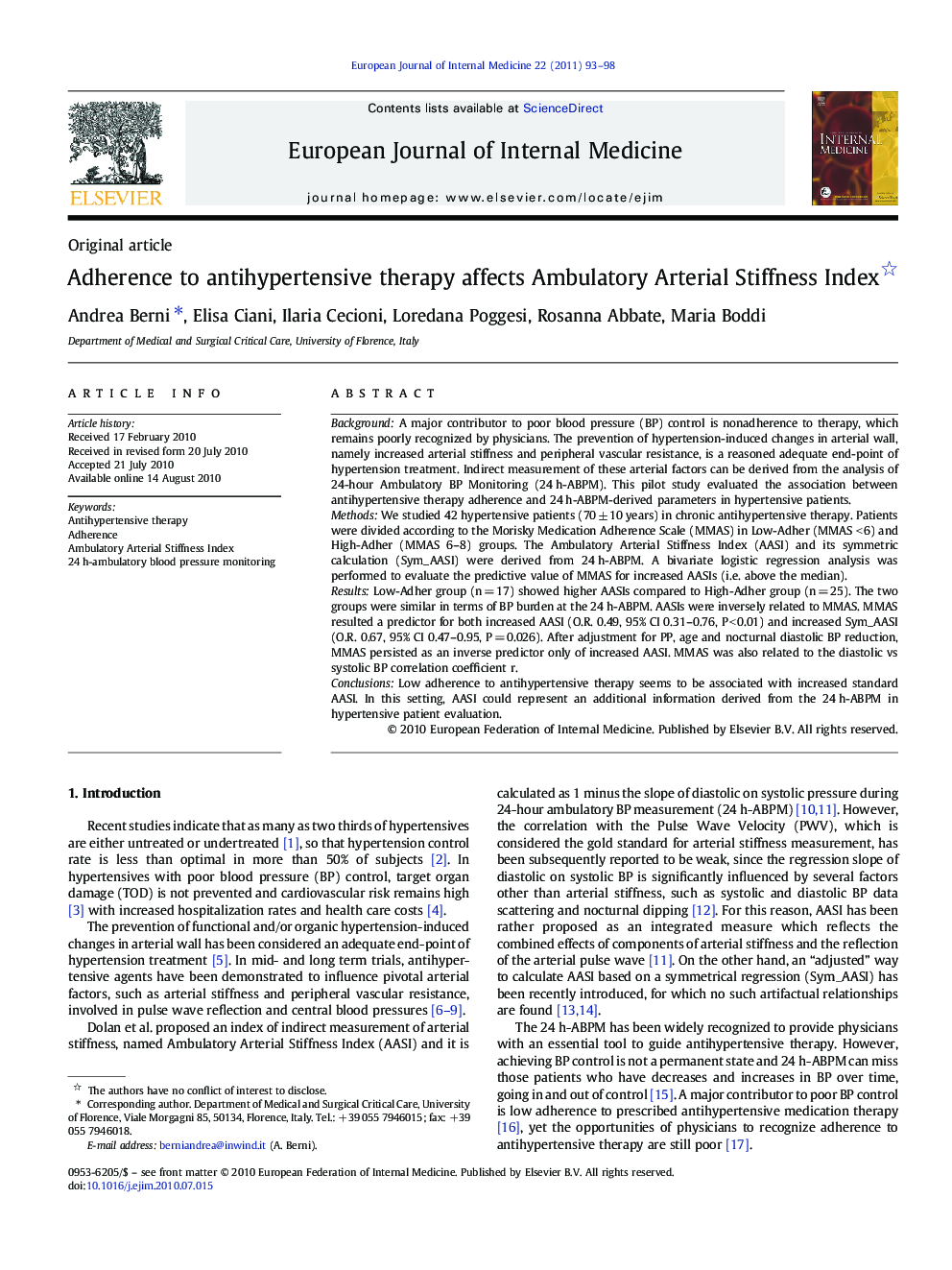| کد مقاله | کد نشریه | سال انتشار | مقاله انگلیسی | نسخه تمام متن |
|---|---|---|---|---|
| 3466494 | 1596582 | 2011 | 6 صفحه PDF | دانلود رایگان |

BackgroundA major contributor to poor blood pressure (BP) control is nonadherence to therapy, which remains poorly recognized by physicians. The prevention of hypertension-induced changes in arterial wall, namely increased arterial stiffness and peripheral vascular resistance, is a reasoned adequate end-point of hypertension treatment. Indirect measurement of these arterial factors can be derived from the analysis of 24-hour Ambulatory BP Monitoring (24 h-ABPM). This pilot study evaluated the association between antihypertensive therapy adherence and 24 h-ABPM-derived parameters in hypertensive patients.MethodsWe studied 42 hypertensive patients (70 ± 10 years) in chronic antihypertensive therapy. Patients were divided according to the Morisky Medication Adherence Scale (MMAS) in Low-Adher (MMAS < 6) and High-Adher (MMAS 6–8) groups. The Ambulatory Arterial Stiffness Index (AASI) and its symmetric calculation (Sym_AASI) were derived from 24 h-ABPM. A bivariate logistic regression analysis was performed to evaluate the predictive value of MMAS for increased AASIs (i.e. above the median).ResultsLow-Adher group (n = 17) showed higher AASIs compared to High-Adher group (n = 25). The two groups were similar in terms of BP burden at the 24 h-ABPM. AASIs were inversely related to MMAS. MMAS resulted a predictor for both increased AASI (O.R. 0.49, 95% CI 0.31–0.76, P < 0.01) and increased Sym_AASI (O.R. 0.67, 95% CI 0.47–0.95, P = 0.026). After adjustment for PP, age and nocturnal diastolic BP reduction, MMAS persisted as an inverse predictor only of increased AASI. MMAS was also related to the diastolic vs systolic BP correlation coefficient r.ConclusionsLow adherence to antihypertensive therapy seems to be associated with increased standard AASI. In this setting, AASI could represent an additional information derived from the 24 h-ABPM in hypertensive patient evaluation.
Journal: European Journal of Internal Medicine - Volume 22, Issue 1, February 2011, Pages 93–98